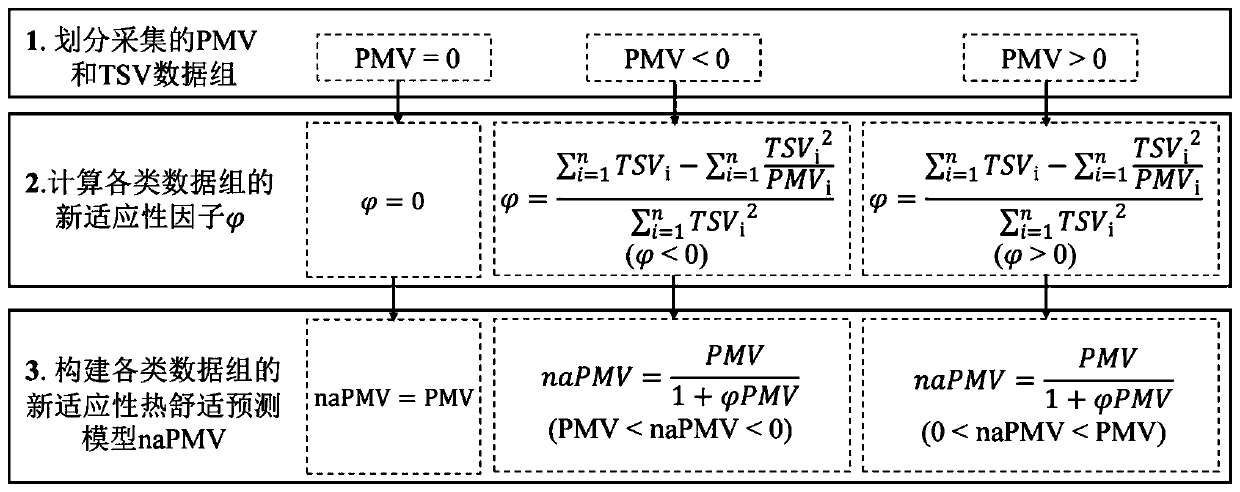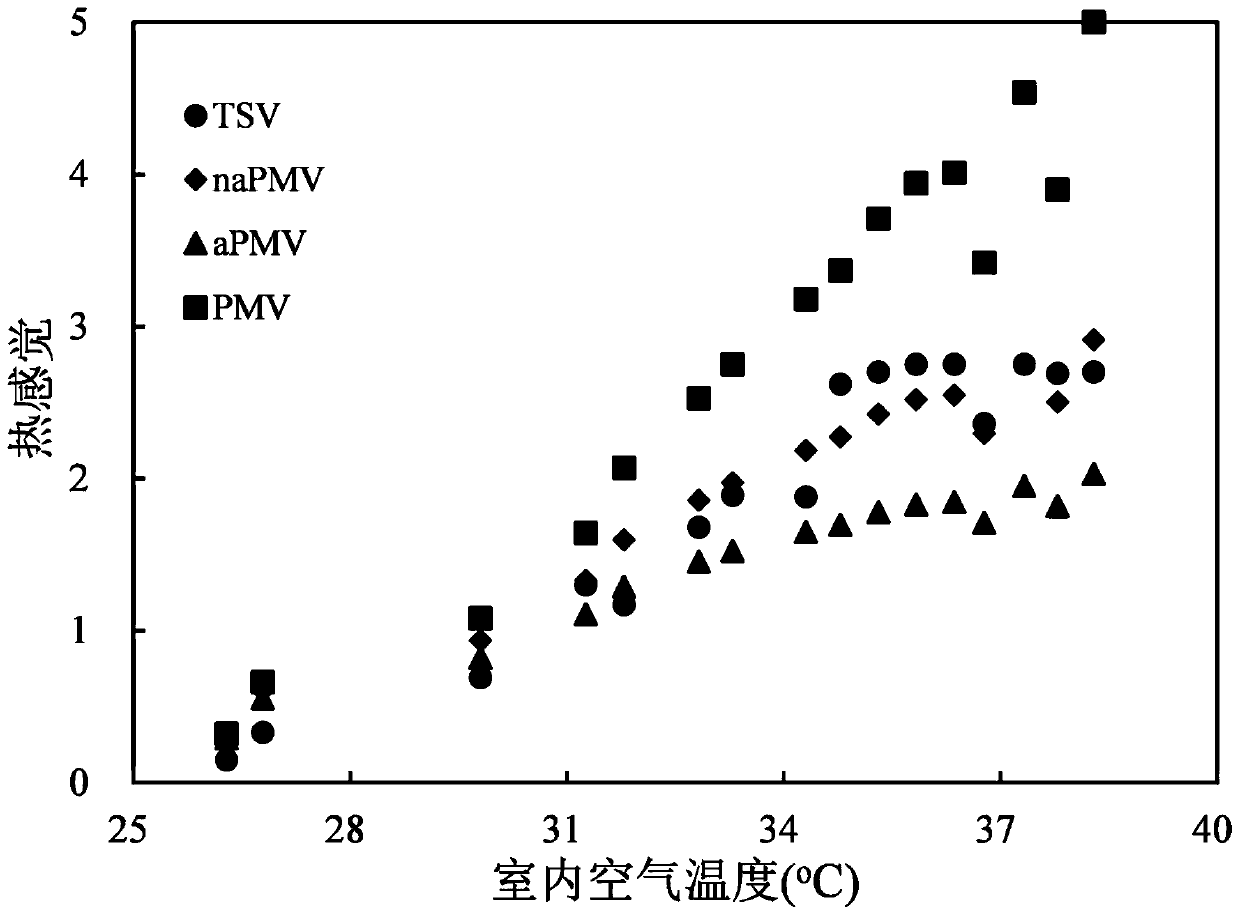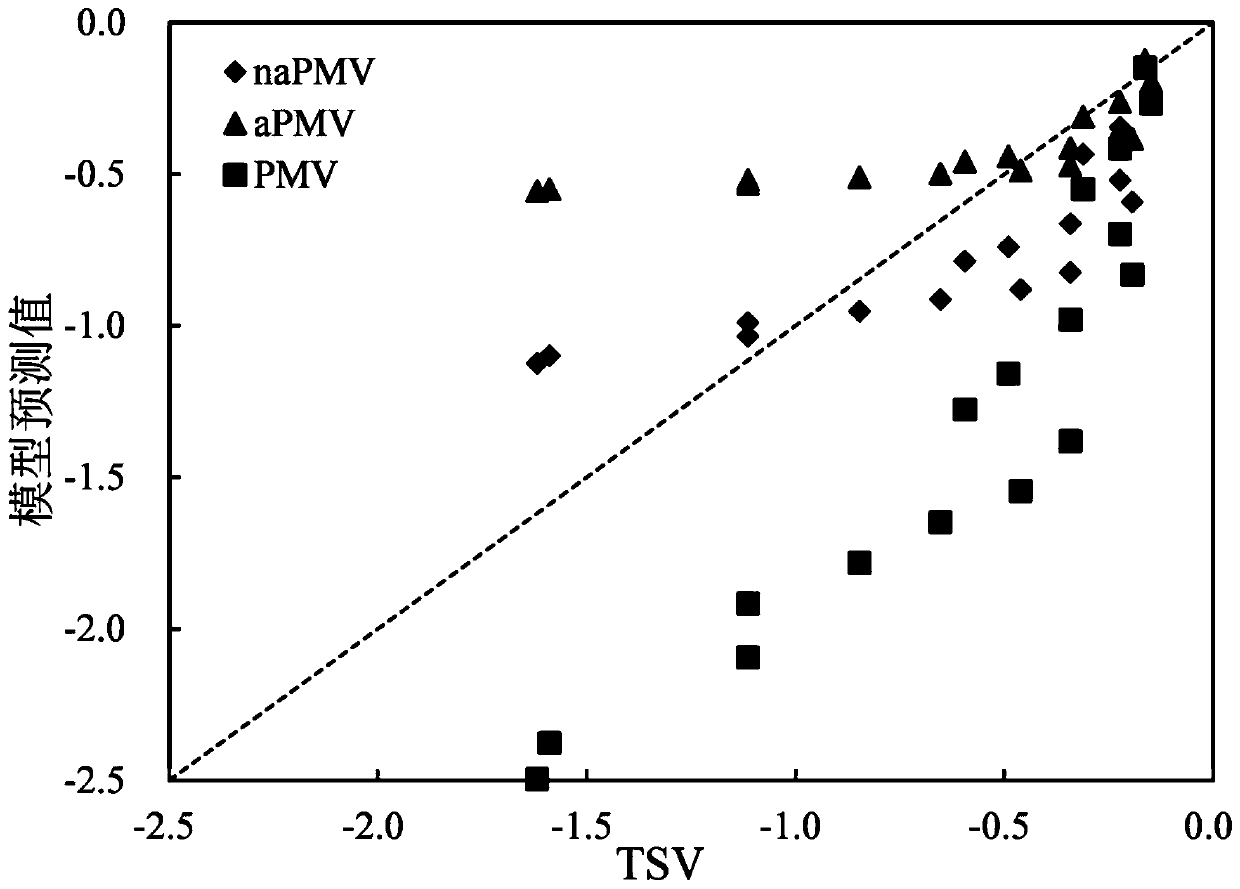Adaptive thermal comfort prediction model construction method
A prediction model and construction method technology, applied in special data processing applications, instruments, electrical digital data processing, etc., can solve problems such as underestimation of thermal discomfort, deterioration of prediction performance, unreasonable adaptability factors, etc., to achieve accuracy and reliability High degree of accuracy, predictive performance improvement effect
- Summary
- Abstract
- Description
- Claims
- Application Information
AI Technical Summary
Problems solved by technology
Method used
Image
Examples
Embodiment 1
[0059] Such as figure 1 As shown, a method for constructing an adaptive thermal comfort prediction model disclosed in the present invention, the adaptive thermal comfort prediction model naPMV is PMV and The ratio of , using the following formula to calculate the adaptability factor
[0060]
[0061] In the formula, PMV is the predicted average voting value of the PMV model; TSV is the actual average thermal sensation voting value; n is the total number of acquired PMV and TSV data sets; i is the i-th group of PMV and TSV data sets.
[0062] In this example, the fitness factor is calculated The process is as follows:
[0063] (a) First get the modeling purpose of naPMV:
[0064]
[0065] Equation (8) essentially adds a new weight w to the deviation between naPMV and TSV i,p :
[0066]
[0067] Get the new weight w according to formula (9) i,p The expression of is as follows:
[0068]
[0069] Since naPMV is used to accurately predict TSV, the new weight ...
Embodiment 2
[0100] The PMV and TSV data sets in this embodiment come from air-conditioned buildings. The air-conditioned building is an office building in Seoul, South Korea. PMV is based on physical measurements, calculated according to Fanger's formula, and TSV is derived from subjective thermal sensation voting. For specific PMV and TSV calculations, refer to the article by Kim et al.: Kim JT, Lim JH, Cho SH, Yun GY. 2015. Development of the adaptive PMV model for improving prediction performances. Energy and Buildings, 98, 100-105.
[0101] Based on the PMV and TSV data sets, Kim et al. calculated aPMV. For the calculation process of specific aPMV, please refer to the article by Kim et al.: Kim JT, Lim JH, Cho SH, Yun GY. 2015. Development of the adaptive PMV model for improving prediction performances. Energy and Buildings, 98, 100-105.
[0102] exist image 3 Among them, the average absolute error MAE of PMV predicting TSV is 0.66, and the error standard deviation SD is 0.34; the...
PUM
 Login to View More
Login to View More Abstract
Description
Claims
Application Information
 Login to View More
Login to View More - R&D
- Intellectual Property
- Life Sciences
- Materials
- Tech Scout
- Unparalleled Data Quality
- Higher Quality Content
- 60% Fewer Hallucinations
Browse by: Latest US Patents, China's latest patents, Technical Efficacy Thesaurus, Application Domain, Technology Topic, Popular Technical Reports.
© 2025 PatSnap. All rights reserved.Legal|Privacy policy|Modern Slavery Act Transparency Statement|Sitemap|About US| Contact US: help@patsnap.com



